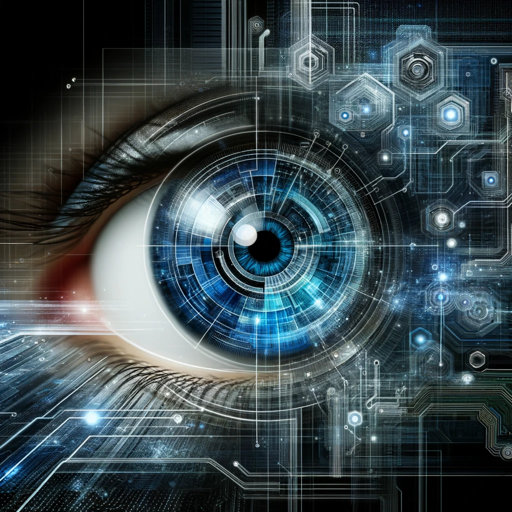OpenCV-Computer Vision Library
AI-Powered Computer Vision Solutions
How do C++20 concepts enhance OpenCV?
Can you explain a C++20 concept in OpenCV context?
Need a C++20-compliant OpenCV solution.
How does 'same_as' concept apply in OpenCV?
Related Tools
Load More
OCR with GPT Vision
VisionText Extractor GPT is designed to perform Optical Character Recognition (OCR) on uploaded images, extracting text with precision.

Computer Vision Expert
Academic expert in computer vision, offering innovative insights for deep learning models.

Python Powerplay: Image Processing with OpenCV
Unleash your Python prowess in image processing with OpenCV! Dive into digital image manipulation and recognition with Python's efficiency and OpenCV's robust features.

ID Photo Pro
Transforms user images into professional ID photos with studio-like quality.

Computer Vision Developer
Expert in Python, OpenCV for image processing and computer vision applications.

Face Finder
A digital assistant for video and image source identification.
20.0 / 5 (200 votes)
Introduction to OpenCV
OpenCV (Open Source Computer Vision Library) is an open-source computer vision and machine learning software library. OpenCV was built to provide a common infrastructure for computer vision applications and to accelerate the use of machine perception in commercial products. Initially developed by Intel, it is now supported by Willow Garage and Itseez. The library is cross-platform and free for use under the open-source BSD license. OpenCV supports various programming languages such as C++, Python, Java, and MATLAB, and it is widely used in both academic and commercial applications. Examples include facial recognition systems, gesture recognition in gaming, and automated inspection in manufacturing.

Main Functions of OpenCV
Image Processing
Example
Applying filters to enhance images, converting between color spaces, resizing, and rotating images.
Scenario
In the automotive industry, image processing is used to enhance the images captured by cameras for better visibility in autonomous vehicles.
Feature Detection
Example
Detecting key points, descriptors, and object recognition using methods like SIFT, SURF, and ORB.
Scenario
In robotics, feature detection is used for object recognition and navigation by identifying and tracking objects within the environment.
Machine Learning
Example
Training and deploying machine learning models for tasks such as image classification and object detection.
Scenario
In healthcare, machine learning models are used for diagnosing diseases from medical images, such as detecting tumors in MRI scans.
Ideal Users of OpenCV
Researchers and Academics
Researchers and academics benefit from OpenCV for its extensive library of functions and algorithms, which facilitate rapid prototyping and experimentation in computer vision and machine learning.
Industry Professionals
Professionals in various industries such as automotive, healthcare, and manufacturing use OpenCV to develop and deploy applications that require image and video analysis, enhancing automation and accuracy in their respective fields.

Steps to Use OpenCV
1
Visit aichatonline.org for a free trial without login, also no need for ChatGPT Plus.
2
Install OpenCV by running 'pip install opencv-python' in your terminal or command prompt. Ensure you have Python installed.
3
Set up your development environment. You can use any Python IDE or text editor, such as PyCharm, VSCode, or Jupyter Notebook.
4
Learn the basics of OpenCV by following tutorials and documentation available on the OpenCV website and other online resources.
5
Start implementing OpenCV in your projects. Common use cases include image processing, video analysis, and machine learning applications. Experiment with different OpenCV functions and modules to understand their capabilities and limitations.
Try other advanced and practical GPTs
猫ミーム1分台本作成
Create AI-Generated Cat Meme Scripts Instantly!

Structured Summary Assistant
AI-Powered Structured Summaries Made Simple

Transcript to Structured Text Advisor
AI-powered text structuring made easy.

Client Communicator 💬
AI-Powered Business Communication Solutions.

Expert Guide to a Standout Upwork Profile
Elevate your Upwork profile with AI-powered precision.

IB Chemistry Mentor
AI-Powered Learning for IB Chemistry

고양이 화가 🐱
Turn your cat's photos into anime art with AI.
Robotics Mentor
AI-powered guidance for robotics enthusiasts.

Startup Ideation Coach
AI-powered startup idea development

Algorithm Analysis and Implementation Expert
AI-Powered Algorithm Insight and Optimization

ComfyUI Node Teacher
Empowering AI-Powered Node Creation

SEO Insight Blogger
AI-Powered SEO Content Creation

- Machine Learning
- Image Processing
- Video Analysis
- Augmented Reality
- Computer Vision
Common Questions about OpenCV
What is OpenCV?
OpenCV (Open Source Computer Vision Library) is an open-source computer vision and machine learning software library. It contains over 2500 optimized algorithms for various image and video processing tasks.
How do I install OpenCV?
You can install OpenCV using pip by running the command 'pip install opencv-python' in your terminal or command prompt. This will install the latest version of OpenCV for Python.
What are some common use cases for OpenCV?
Common use cases for OpenCV include object detection, facial recognition, image segmentation, motion tracking, and augmented reality applications. It is widely used in robotics, healthcare, security, and many other industries.
Can OpenCV be used with other programming languages?
Yes, OpenCV supports multiple programming languages including C++, Python, Java, and MATLAB. The Python and C++ interfaces are the most widely used and offer the most functionality.
Where can I find resources to learn OpenCV?
There are many resources available to learn OpenCV, including the official OpenCV documentation, tutorials on the OpenCV website, online courses on platforms like Coursera and Udemy, and books such as 'Learning OpenCV' by Gary Bradski and Adrian Kaehler.